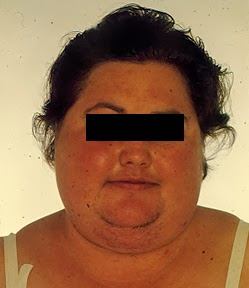Cushing's syndrome in women with polycystic ovaries and hyperandrogenism
"How might polycystic ovarian syndrome and Cushing's syndrome be distinguished?
The menstrual cycle of individuals with PCOS is likely to have always tended towards irregularity (the amenorrhea in this case developed after years of a regular cycle).1 The onset of PCOS is uncommon after the age of 30 years. Both PCOS and Cushing's syndrome are associated with obesity, an increased risk of hypertension and impaired glucose tolerance or secondary diabetes.4, 7, 9 Clinical and/or biochemical hyperandrogenism with menstrual infrequency is found commonly in women with Cushing's syndrome. In fact, there are data to suggest that menstrual irregularity is linked to the level of glucocorticoid excess rather than to androgen levels.7 Ovarian cysts are certainly not discriminatory; they are present in almost half of women with Cushing's syndrome.12 It is also noteworthy that cysts, in isolation, do not predict the development of PCOS;13 furthermore, whereas imaging the ovaries can help to exclude a tumor, our experience would suggest that identifying cysts either laparoscopically or by ultrasound scanning can inappropriately curtail the search for alternative causes of clinical and/or biochemical hyperandrogenism.
Virilization in PCOS, characterized by a deepened voice or clitoromegaly, is highly unusual and more in keeping with an androgen-secreting tumor (none of the cases illustrated in Table 2 experienced virilization).7 Other clinical features lend support to the diagnosis of Cushing's syndrome, but these can be absent, especially in the early phases of cortisol excess.9 Biochemically, relative luteinizing hormone excess has been reported in patients with PCOS,14 whereas low gonadotropin levels might increase the suspicion of Cushing's syndrome (as in Case D in Table 1, who presented with primary amenorrhea).12 None of these features is absolute, the overlap between syndromes is large and, thus, screening tests are needed to exclude Cushing's syndrome (Table 3).

No comments:
Post a Comment